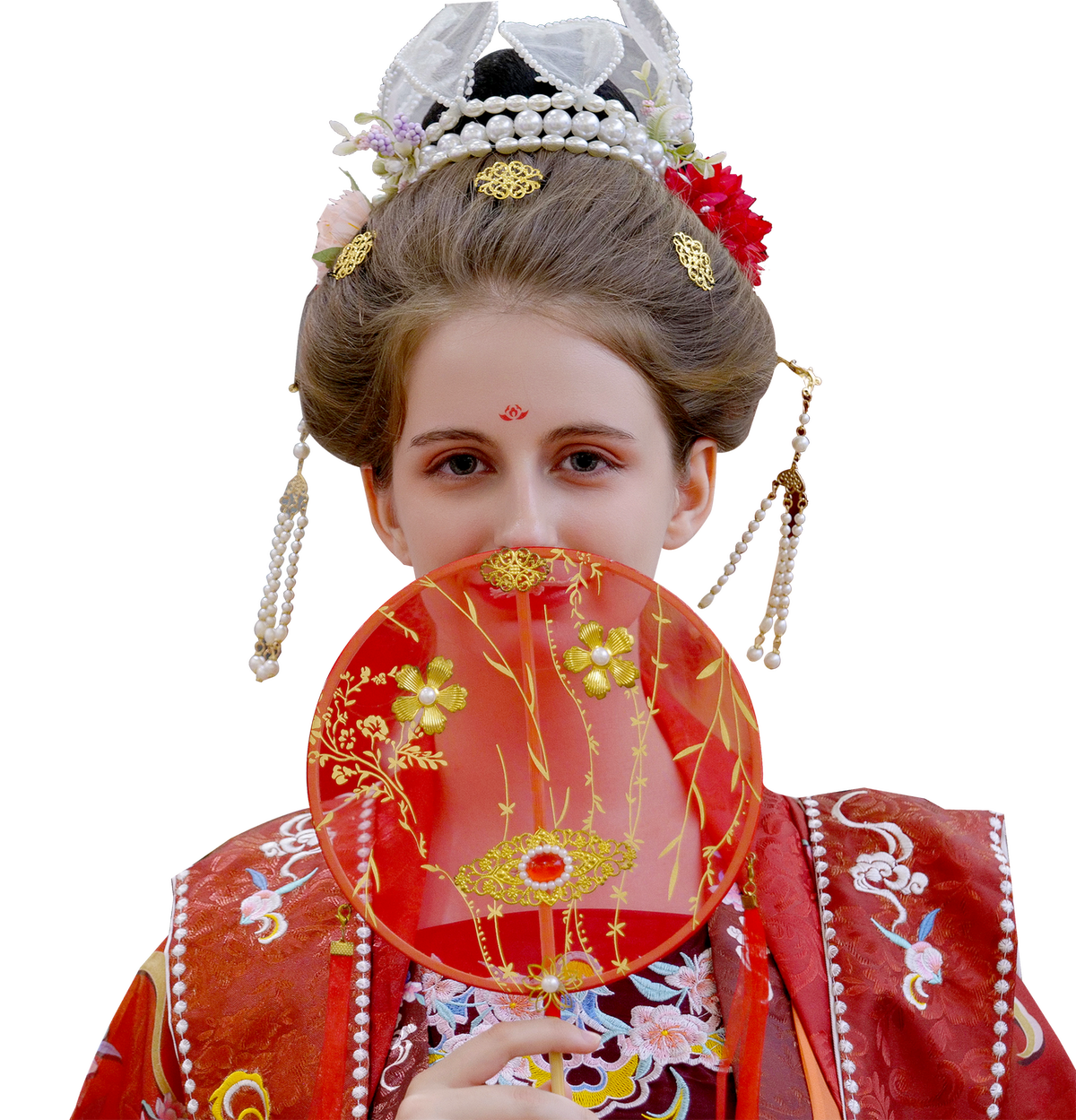

Serving as more than just fabric, the traditional Chinese hanfu continues to weave a cultural tapestry that binds individuals, communities and nations.
Hanfu, the traditional attire of the Han ethnic group in China, boasts a history spanning nearly 4,000 years. In recent times, there has been a resurgence of interest in hanfu in China and the United States, as more people are drawn to wearing and analyzing it.
Rachel Yu, from Boston, told China Daily that her introduction to hanfu came unexpectedly one day while she was browsing art documentaries online. It was a chance encounter with a hanfu video that captivated her attention.
"I was like, well, this is very cool, but I didn't think that much about it," she said, noting that the clothing truly stands out from many fashions she had seen in the past.
Yu developed her interest in hanfu after marrying her Chinese husband, who gifted his wife her first set of hanfu and introduced her to more knowledge about the traditional clothing.
"Then, I was looking online at all the pictures, trying to learn, is this from the Ming Dynasty (1368-1644)? Is this from the Tang Dynasty (618-907)? How do you style it? What hairstyle matches? How did they do their makeup? It's just like going down the internet rabbit hole and never coming back out," Yu said.
She always asks questions, expressing fascination whenever encountering hanfu online or seeing people wearing different kinds of the attire.
"And there's a lot of variety in the different dynasties because it is so many years," she said. Yu said the one she likes the most is from the Ming Dynasty.
"It goes so well with everything. You can just wear that in your daily life with a sweater or something. And it's so pretty and fancy that it suits daily life well," she said.
Yu added that she also likes to wear the Ru skirt — which is made up of a short jacket and a long skirt — that was very popular during the Tang Dynasty.
"Wearing it now would be too cold, but the makeup is so fun because they have all the flowers and stuff drawn on their faces," she said.
Yu said that she has accumulated some knowledge about hanfu, but beginning of the research process was very hard for her as a foreigner.
"When I watch Chinese videos about hanfu, to be honest, I'm just looking at the visuals. But the details of what they're saying, unless they're showing it on screen, I don't understand," she said. "It was very hard to research because there is almost nothing about hanfu in English to teach people about (the attire)."
She said she decided to search online and usually found answers through blog posts, so she could ask specific questions and seek help. Yu is now learning Chinese to know more about the traditional clothing from a faraway country.
To encourage herself to learn Chinese, Yu opened accounts on Douyin and TikTok platforms to record the process. To her surprise, she gained as many as 53,000 followers who were interested in the Western girl, who was deeply immersed in Chinese culture. Additionally, people were learning English content about hanfu.
Yu is not only a student but also an ambassador who is a bridge between Chinese hanfu culture and international fans around the world.
"It sort of snowballed into the account becoming more hanfu over time," she said. "When I was trying to figure out how to do my hair because a lot of hanfu videos just show premade hairpieces, suddenly, a flash of inspiration rushed into my head: why don't I make my own hairpieces," she said.
"So I tried to look at what the hair looked like. I examined old drawings, statues from online or museums. And I thought, how can I replicate this? So I tried to copy it. And then people, mostly in China, were like, 'What? What is the white girl doing?'." Yu said that was how she started posting hanfu-related content on her account.
"Sharing more about making the hair, because I found it really fun, and other people found it interesting as well. But I didn't have any intention of being a hanfu teacher. I'm not qualified for that at all," she said, citing the long history and variety of types and styles of hanfu.
"And as someone in America who wears hanfu, I think that shines a great positive light on Chinese culture, because a lot of people in America don't know much about China," she said. Yu added that her interest in hanfu brought her friendships with other lovers of the traditional Chinese attire, as she joined the hanfu club in Boston.
Yu wore hanfu for her wedding, and also wears it with her husband and friends during Chinese festivals and other important events. She also likes to incorporate hanfu-related elements into her daily life.
"I just find it very interesting and also often functional as well," Yu said. "For example, the horseface dress is very convenient for daily usage. I could just wear the skirt or just wear the vest and, add it to your everyday outfit."
Yu said she felt really welcomed by the hanfu community and believed that the "magic clothing "has helped her build many personal connections and friendships.
"Hanfu is really a way to smooth the relationship between two countries also," she said. "You have the cultural connection; then people start ignoring the government because they care about their own opinion more. They want to know the country more through the culture and friendship, and form their own personal understanding."